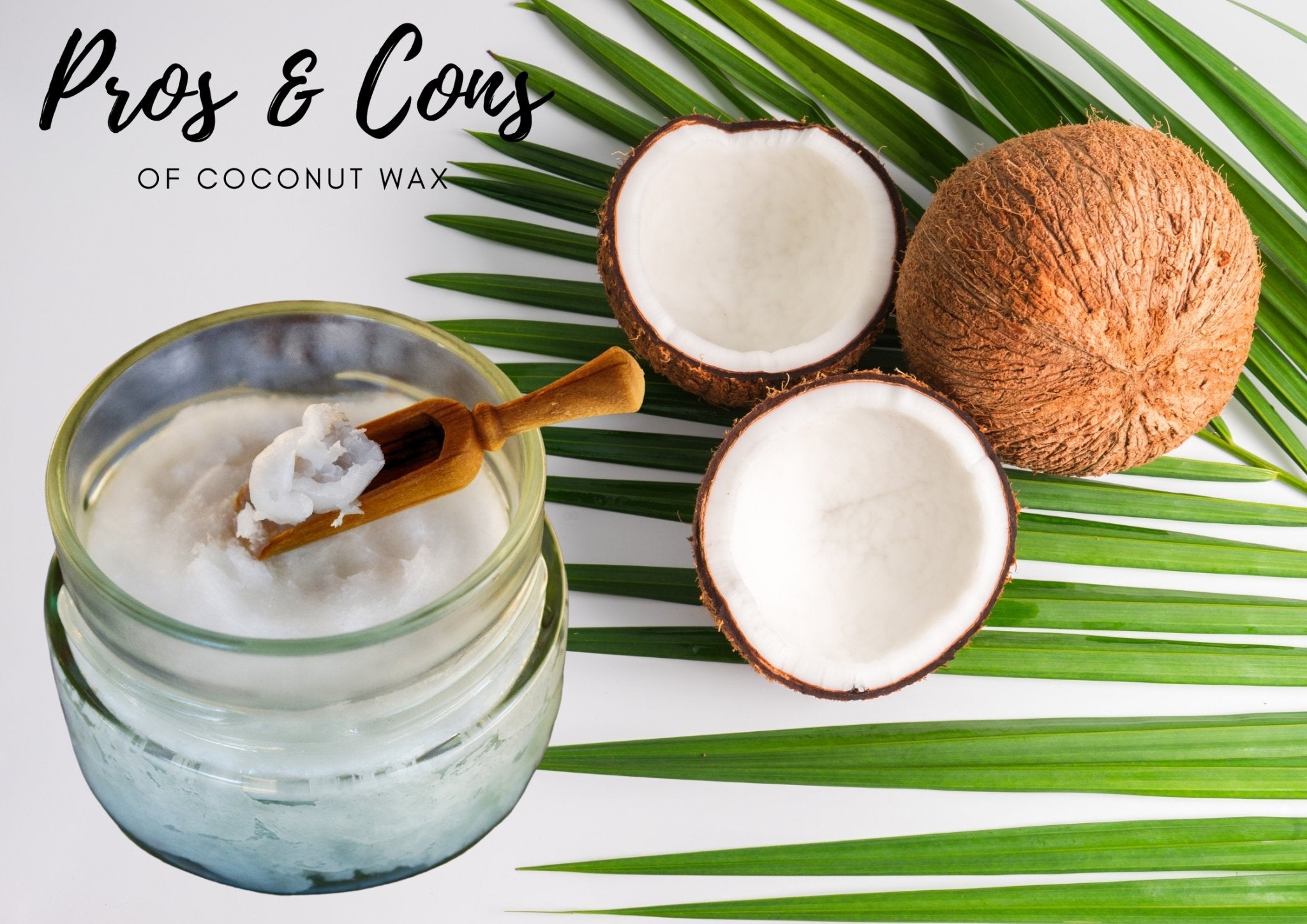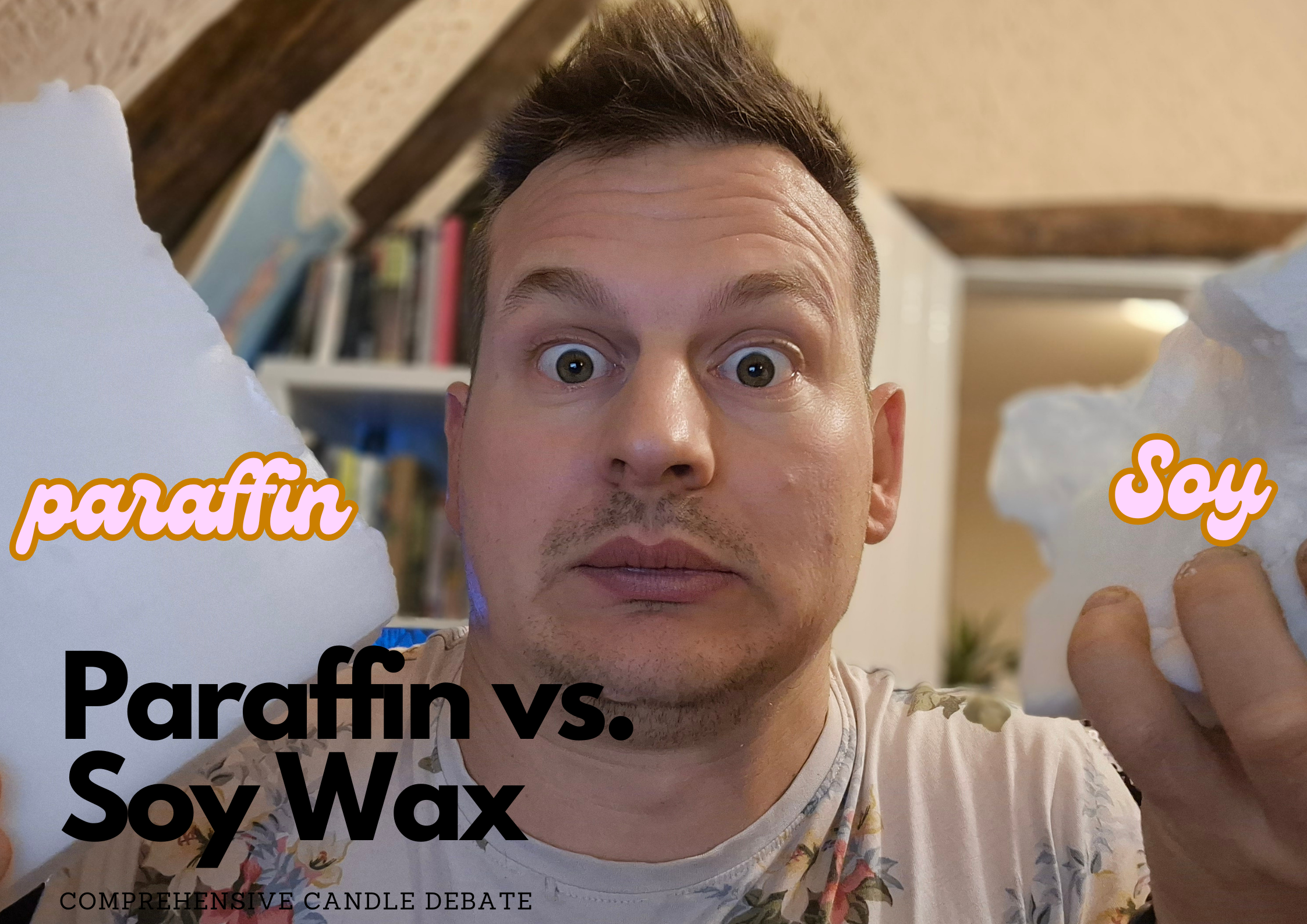The Pros and Cons of Coconut Wax Candles
Mar 13 , 2022
There is nothing better than coming home after a long day, lighting a candle, and relaxing. There are many types of candles, however, there are few wax candles that beat the coconut wax candle.
The first wax candles were invented by the Egyptians about 7,000 years ago. Since then, you can purchase an array of candles each made from different wax blends with stunning aromas. Today, coconut wax candles have grown in popularity and there are plenty of reasons for this.
Coconut oil is not only found in food, health, and cosmetic products but this oil makes for a great candle wax too. Coconut wax candles can be found in homes across the world. They make for amazing decorative pieces, and they produce an amazing scent too.
In this article, we’ll guide you through the pros and cons of coconut wax candles. Additionally, we’ll provide some quick tips when you create your own candle. We will also take a look at the four other common types of waxes that are often blended with coconut wax.
First, we’ll take a look at what a coconut wax candle is.
What Are Coconut Wax Candles?
Let’s quickly touch on what exactly coconut wax candles are. They are made from odorless and colorless coconut oil that is sourced from a coconut. It is also considered as one of the healthiest waxes to use when making a candle, which we’ll explain in more detail later on.
These naturally sourced candles are made from coconut oil that is often blended with other harder, natural waxes such as beeswax, paraffin, or soy wax. It is combined with other waxes to create an optimally burning candle.
The Pros
Now that we’ve covered what a coconut wax candle is, let’s jump straight into the pros of owning one.
Environmentally Friendly
This is the number one benefit that a coconut wax candle yields. If you’re environmentally aware, then these candles are perfect for you!
When compared to other waxes such as paraffin or soy, it has the cleanest burn. It produces nearly zero soot which is not only environmentally friendly, but you can be assured that it won’t damage any surfaces that it’s burnt on.
The wax is also sustainable and is comprised of organic and renewable materials. This means that it has a minimal environmental impact. The wax is also biodegradable as fewer coconuts are needed to make a candle.
So, you’ll be able to enjoy its relaxing burn without damaging the environment. What a great feeling, right?
Slow Burning
Another great pro of using coconut wax candles is that they are slow-burning. This means that the candle will last for a few hours. The best part is that the candle has the ability to hold scents and aromas for longer too. So not only will the candle burn longer but it’ll produce an aroma for a longer duration too.
It’s the best of both worlds!
Keep in mind that the bigger the candle, the longer it’ll burn. So, if you’re looking for a longer burning candle then it’s best to purchase a larger candle.
Super Scent Throw
We previously mentioned that coconut wax candles hold scents for longer, but that’s not all it does. This wax also has the ability to throw scents well too. Basically, this means that these candles boost the specific aroma throughout your home quickly. So, once you’ve lit the candle it will fill your room with its sweet scent in a short space of time.
When choosing a coconut wax candle, it’s important to take note of the essential oil or scent added to the wax as your house will be filled with it quickly. A great option is coconut wax mixed with beeswax as it produces a pleasant and sweet aroma.
Not Associated with Deforestation
Many other types of waxes require mass production which unfortunately destroys the environment and leads to a natural decline. Paraffin wax and palm wax are particularly known for their unsustainable production process. The coconut wax candle, however, isn’t associated with deforestation.
Coconuts grow on coconut trees which can survive for up to 60 to 80 years. These trees also don’t need to be treated with pesticides to grow. Additionally, the coconut tree is renewable as crops can be grown fairly easily while lasting for a substantial amount of time.
It’s Not Genetically Modified
Genetically modified (GMO) refers to a process carried out to alter an organism’s genetic material. This comes with an array of environmental issues and even health concerns.
A further pro of coconut wax candles is that coconut oil doesn’t need to be genetically modified. So, producers have not added anything to the wax during its production. This is great news as the product is completely biodegradable and natural.
The reason that coconuts don’t need to be genetically modified is thanks to their hard exterior. This protects the coconut from any insects and fire.
The Cons
Now that we’ve covered the brilliant benefits of coconut wax candles, we should also touch on the cons of burning one too.
Low Melting Point
A major con of lighting a coconut wax candle is its low melting point. If you’ve ever owned coconut oil and live in a warm region, then you know exactly what we’re talking about.
In high temperatures, the oil and wax will often melt which is an issue when being shipped. If the coconut wax has not been blended with another natural wax, then it may melt, and the wax may even become ruined.
This is why other waxes like beeswax and soy wax are mixed in with coconut wax. It makes for a more stable and stronger candle which ultimately prevents it from melting easily.
Limited Candle Sizes and Types
We previously mentioned that coconut wax has a low melting point which means that it melts relatively quickly in hot temperatures. This can cause other issues too such as limiting the type of candles and size of candles that can be produced.
This means that there are certain limitations when it comes to creating different shaped and sized candles.
Expensive to Produce
A final con of owning a coconut wax candle is that it is more expensive than a common paraffin candle. The cost to produce coconut wax is relatively expensive and due to its low melting point, it has to be combined with other waxes. Ultimately, this makes it more expensive.
So, you may notice that it is pricier to purchase coconut wax candles when compared to other candles.
Tips When You Make Your Own Coconut Wax Candles
If you’re new to coconut wax candles, then don’t worry because we’re here to help. Below, we’ll provide you with some top tips when you make your own coconut wax candles.
When allowing the wax time to rest you shouldn’t try to rush this process. It’s best to allow the wax to cure for 3 to 7 days. This will enhance the scent it throws.
You will also need to keep in mind the size of the room you wish to place the candle in. The bigger the room the bigger the candle should be if you wish to fill the room with its sweet aroma.
It’s better to opt for essential oils. These not only smell amazing but are totally natural and produce a refreshing smell.
When you need to determine what wick to use, we recommend that you choose a wooden or cotton wick. These produce a stunning burn and look great too.
We hope these tips help you along your candle-making journey. Next, we’ll discuss the different waxes that you can blend with coconut wax.
Different Types of Waxes
We have mentioned that coconut wax needs to be blended with other waxes to produce a stable and stronger candle. The most popular types of waxes that are combined with coconut wax are paraffin wax, soy wax, palm wax, and beeswax. Each of these waxes has its own unique pros and cons too.
Paraffin Wax
Paraffin wax is by far one of the most commonly used waxes when it comes to making candles. This is mainly because it is relatively inexpensive to produce. It also holds a high amount of fragrance and color, so many different types of candles can be produced using it.
This wax has a variety of melting points; however, it isn’t regarded as very environmentally friendly. The process to produce paraffin has an array of negative environmental effects and it isn’t a clean burner.
Furthermore, you will need to be careful about where you burn this candle as it produces a large amount of soot. This can damage the surface and leave a nasty black wax.
Soy Wax
Soy wax is another popular wax used to create candles. It is made from soybeans which makes it fairly environmentally friendly too. The only issue is that soybeans are associated with deforestation and require a large number of pesticides to grow.
A great pro of soy wax is that it’s a slow burner and blends well with coconut wax. Unfortunately, if you love a well-scented candle then this wax isn’t ideal as it doesn’t hold aromas well.
Palm Wax
Palm wax is obtained from palm oil and was once thought of as an environmentally friendly option, however, it actually isn’t. Due to the popular global demand for palm oil, it has resulted in the mass production of this product. This has led to unsustainable production practices.
The palm wax produces a relatively firm wax that is also brittle. It has the same burn quality as paraffin wax and holds scent well too.
Beeswax
Beeswax is one of the oldest types of wax used to produce candles. It is harvested from bees during their honey-making process. This means that it is also eco-friendly and natural too.
The best part about this wax is that it is harder and more solid. So, you can create a variety of candles using it. The wax also has the ability to throw a sweet, aroma throughout your home.
When coconut wax and beeswax are blended, you’ll be gifted with an amazing candle that throws scent well and burns relatively slowly.
Concluding Thoughts
By now you can tell that the coconut wax candle’s quality burn and scent throw are unmatched. If you’re all about saving the environment, then this candle is definitely for you. There may be a few cons of owning a coconut wax candle, however, the pros outweigh these.
We hope you try out a coconut wax candle to see what all the hype is about and enjoy its amazing burn and aroma.





